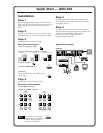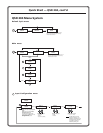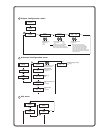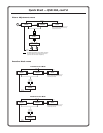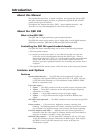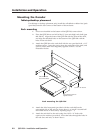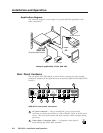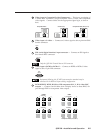
QSD 204 • Introduction1-2
Introduction
About this Manual
This manual discusses how to install, configure, and operate the Extron QSD
204 quad standard decoder and how to operate the optional IR 901 infrared
remote control (part #70-152-01).
Throughout this manual the terms “QSD”, “quad standard decoder”, and
“decoder” are used interchangeably to refer to the same product.
About the QSD 204
What is the QSD 204?
The QSD 204 is a high performance quad standard decoder.
The QSD 204 comes in two models, one of which offers a serial digital interface
(SDI) input connector: QSD 204 (no SDI) and QSD 204 D (with SDI).
Controlling the QSD 204 quad standard decoder
The QSD 204 can be controlled using one or more of the following methods:
• The front panel controls.
• A computer, a touch screen panel, or any other device that can send and
receive the serial communications through the RS-232 port. Extron’s
Simple Instruction Set™ (SIS™) is a set of simple keystroke commands that
can be used with any such devices, and Extron’s control software for
Windows provides a graphical interface for controlling the decoder from a
computer.
• The optional IR 901 remote control, which has most of the front panel controls.
Features and Options
Features
Quad standard decoder — The QSD 204 converts interlaced S-video and
composite video signals following either the NTSC 3.58, NTSC 4.43, PAL,
or SECAM video standards, to a non-interlaced output: RGBHV, RGBS,
RGsB, or component video.
Four video inputs —
• Input 1 — One BNC connector on the rear panel accepts composite video.
• Input 2 — Three BNC connectors on the rear panel accepts composite,
component, or S-video.
• Input 3 — A 4-pin DIN connector accepts an S-video signal.
• Input 4 — A 15-pin HD connector accepts an RGBS or RGBcS video
signal.
SDI video input (optional) — One BNC connector on the rear panel accepts SDI
video.
Picture controls — Color, tint (hue), brightness, contrast, centering, and
blanking. The blanking feature will remove unwanted scan lines from the
top or bottom of a displayed image, such as noise and closed captioning.
Four-line adaptive comb filter — Separates the color carrier signal and it’s
harmonics from the video signal to eliminate chroma noise and enables a
projector or monitor to display a clean, clear picture.
Buffered video outputs — Six rear-panel BNC connectors and one VGA-type
15-pin HD connector provide connections for RGB output. Both outputs
(the BNCs or the 15-pin HD connector) are active at all times for
simultaneous output.




